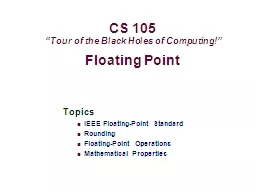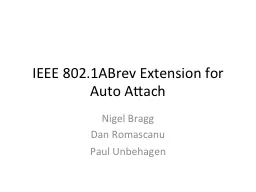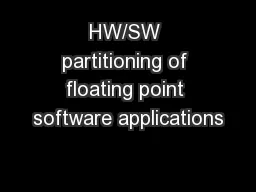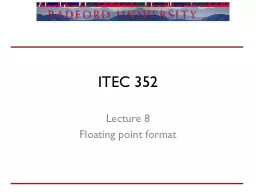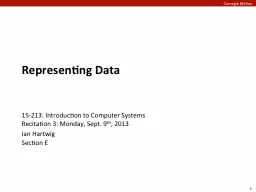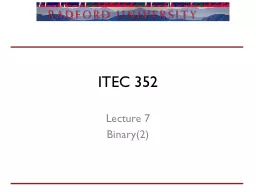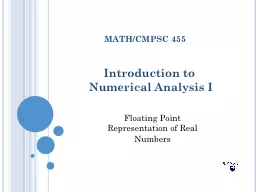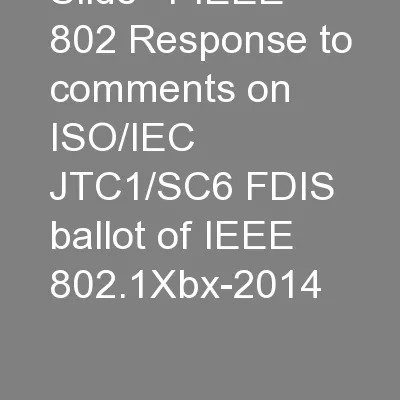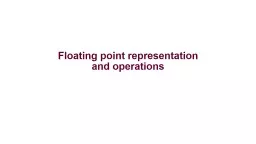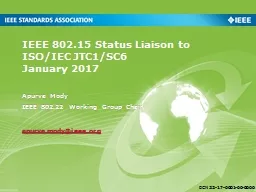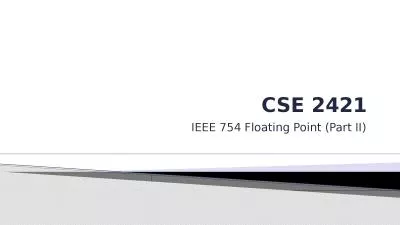PPT-Floating Point Topics IEEE Floating-Point Standard
Author : karlyn-bohler | Published Date : 2018-11-04
Rounding FloatingPoint Operations Mathematical Properties CS 105 Tour of the Black Holes of Computing FloatingPoint Puzzles For each of the following C expressions
Presentation Embed Code
Download Presentation
Download Presentation The PPT/PDF document "Floating Point Topics IEEE Floating-Poin..." is the property of its rightful owner. Permission is granted to download and print the materials on this website for personal, non-commercial use only, and to display it on your personal computer provided you do not modify the materials and that you retain all copyright notices contained in the materials. By downloading content from our website, you accept the terms of this agreement.
Floating Point Topics IEEE Floating-Point Standard: Transcript
Download Rules Of Document
"Floating Point Topics IEEE Floating-Point Standard"The content belongs to its owner. You may download and print it for personal use, without modification, and keep all copyright notices. By downloading, you agree to these terms.
Related Documents

